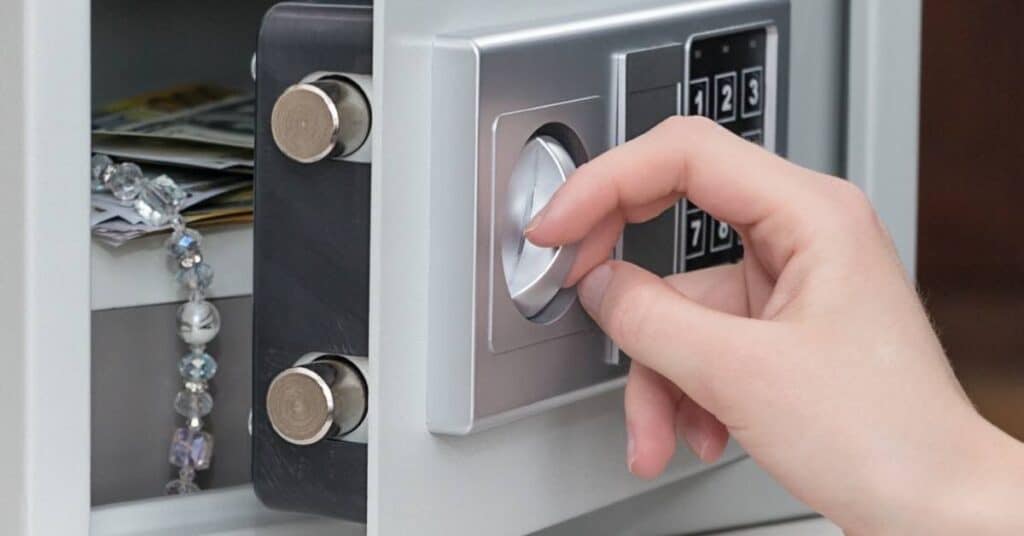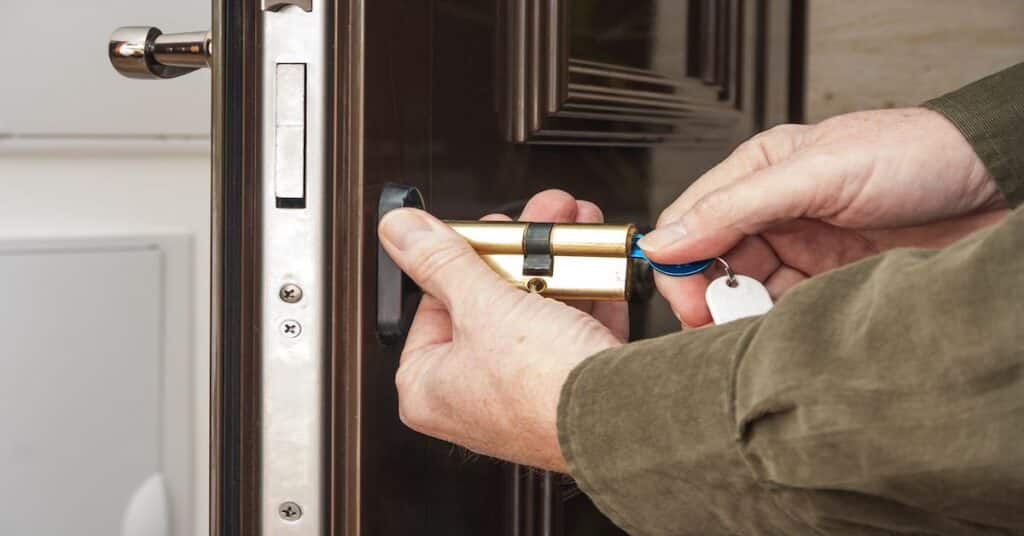Sliding door locks are integral components for safeguarding the security of residential or commercial properties. When a lock malfunctions it poses a potential threat to property safety necessitating prompt replacement. Recognizing signs of a deteriorating sliding door lock is pivotal to maintaining security integrity.
Facing issues with your sliding door lock? No worries! Follow these easy steps for a quick replacement.
Replacing a sliding door lock is a straightforward process. Start by carefully removing the old lock. Then, select a new lock that matches your door’s specifications. Follow the installation instructions to securely install the new lock. With these steps, your door will regain its security. Sliding door lock replacement: A Comprehensive Guide provides further assistance for a smooth replacement process.
Types of Sliding Door Locks
There are different types of sliding door locks available. One common type is a latch lock which is easy to operate by pushing down or pulling up on a lever. Another type is a cylinder lock, similar to those found on traditional doors which require a key to unlock.
Sliding door locks offer various features for added convenience and security. Thumb turn locks enable easy access without keys, while foot locks provide hands-free operation. When considering sliding door lock replacement, remember to choose a suitable lock that aligns with your needs and preferences.
With the insights provided in Sliding Door Lock Replacement: A Comprehensive Guide, you can confidently enhance your door’s security and functionality. Choose the type of sliding door lock that best suits your needs and preferences for security and ease of use.
Surface-Mounted Locks
Surface-mounted locks are affixed onto the door frame’s surface, offering a straightforward installation process. While they provide basic security, they might not withstand determined forced entry attempts.

Mortise Locks
Mortise locks are revered for their robustness and security enhancements. Embedded within the door pocket (mortise), these locks boast multiple locking points, making them a preferred choice for high-security environments.
Cylinder Locks
Cylinder locks, alternatively known as pin tumbler locks, are prevalent in sliding doors. Operated by a key these locks come in various configurations such as single or double cylinders offering adaptable security levels to suit different requirements.
Handle Locks
Handle locks integrate door handle functionality with a locking mechanism, providing convenience in operation. Their security level might be comparatively lower than other lock types.
Related Content: Lock In Style: Trendy Sliding Door Lock Replacement Tips
Steps for Sliding Door Lock Replacement
Replacing a sliding door lock is straightforward. First, gather your tools: a screwdriver and the new lock. Then, carefully remove the screws securing the old lock in place.
Next, take out the old lock and insert the new one making sure it aligns correctly with the door frame. Finally, tighten the screws to secure the new lock in place. Test the lock to ensure it functions properly and your sliding door will be securely locked once again.
Preparation
Commence by assembling essential tools and materials like a screwdriver, measuring tape, and the replacement lock. Clear the door vicinity for unobstructed access, facilitating a smooth replacement process.
Removing the Old Lock
Delicately extract the screws securing the old lock, avoiding any damage to the door or frame. Subsequently, gently dislodge the outdated lock mechanism from the door structure.
Choosing the Replacement Lock
Selecting a replacement lock entails matching dimensions and specifications with the previous lock. Consider upgrading to a more robust lock variant to fortify security measures, aligning with specific safety requirements and preferences.
Tips for Ensuring Proper Replacement
Ensuring proper replacement of a sliding door lock is important for security. Before beginning, double-check that you have the correct replacement lock that matches your door’s specifications.
Take note of how the old lock is installed before removing it to ensure proper placement of the new lock. Finally, follow the manufacturer’s instructions carefully during installation to avoid any errors and ensure the new lock functions correctly. With these tips, you can replace your sliding door lock effectively and maintain the security of your home.
Proper Measurement
Precise measurement of door dimensions and existing lock specifications ensures seamless integration of the replacement lock, mitigating potential installation setbacks.
Choosing Quality Locks
Investing in premium-quality locks from reputable manufacturers ensures longevity, reliability, and optimal security performance. Prioritize superior locks over inferior alternatives to fortify property safety effectively.
Sliding door latch lever replacement
Replacing a sliding door latch lever is a simple task. Begin by identifying the type of latch lever your door has and purchase a replacement accordingly.
Next, use a screwdriver to remove the screws securing the old latch lever in place. Then, carefully detach the old lever and attach the new one in its position, ensuring it aligns properly. Finally, tighten the screws to secure the new latch lever in place. With these steps, your sliding door latch lever will be replaced, restoring functionality to your door.
Cylinder Locks
Cylinder locks, also referred to as pin tumbler locks, are another popular choice for sliding doors. These locks operate using a cylinder mechanism that can be rotated by a key to lock or unlock the door.

They come in various configurations, including single-cylinder and double-cylinder options, offering different levels of security based on your needs.
Handle Locks
Handle locks combine the functionality of a door handle with a built-in locking mechanism. They are convenient to operate, allowing you to lock or unlock the door with a simple turn of the handle.
Handle locks may not provide the same level of security as other types of locks and are often used in conjunction with additional security measures.
The pros and cons of each type of sliding door lock can help you choose the right replacement lock for your specific requirements. Whether you prioritize convenience, durability, or maximum security, there’s a sliding door lock out there to suit your needs.
Frequently Asked Question
What tools do I need for sliding door lock replacement?
You’ll typically need a screwdriver that matches the screws on your lock. Sometimes a drill might be necessary for installation.
How do I know if I need to replace my sliding door lock?
If your lock is damaged rusted or difficult to operate it’s time for a replacement. Also if you’ve lost keys or suspect a security risk it’s wise to replace it.
Can I replace a sliding door lock myself, or do I need a professional?
With basic DIY skills you can often replace a sliding door lock yourself. If you’re unsure or encounter difficulties it’s best to consult a professional locksmith.
Conclusion
Replacing a sliding door lock is a manageable task that enhances home security and functionality. With the right tools, knowledge, and replacement lock, you can complete the process yourself. Remember to follow safety precautions and manufacturer instructions closely to ensure a smooth replacement experience.
Sliding door lock replacement: A Comprehensive Guide offers valuable insights for homeowners seeking to enhance their door security effortlessly.

Warner Clips is an expert writer with 4 years of experience crafting engaging content on Home topics. My expertise ranges from creating cozy environments to tackling Home Improvement projects. Find my work in publications like Huffington Post and Reader’s Digest.







